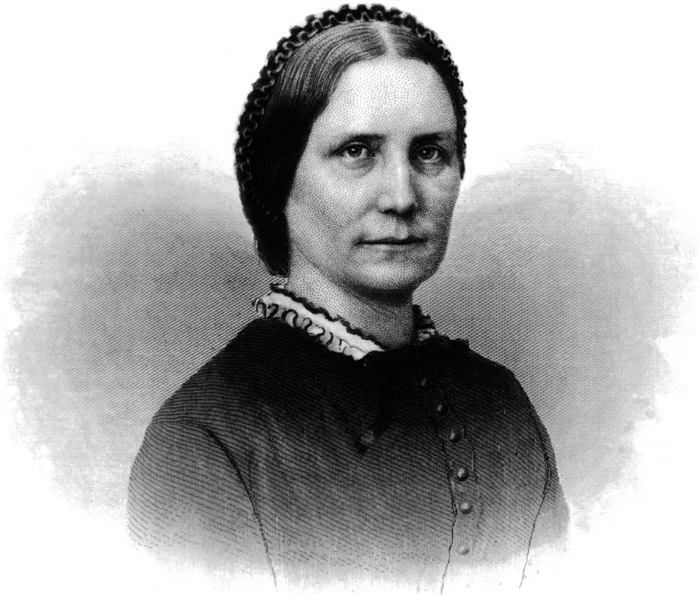 |
Mary Ashton Rice
Livermore 1820-1905 |
|||
|
Born in Massachusetts
in1820, into a well-to- family, Mary attended a seminary until her
16th birthday. She stayed on to teach for two more years. Mary
obtained a job as a tutor on a Virginia plantation. She became
a devoted abolitionist after observing the treatment of slaves. In
1842, Mary assumed charge of a private school for women in
Massachusetts. She married an
Universalist minister and moved to Chicago in 1857. Mary
campaigned for Abraham Lincoln in the 1860 election.
During the Civil War, she
volunteered as a leading member of the United States Sanitary
Commission. As architect of its Northwestern branch, she
attended a council of the national sanitary commission at
Washington in December 1862, organized and communicated to
thousands of women in hundreds of Ladies Aid Societies.
She spent time visiting army posts and inspecting
hospitals. Under her guidance, the Chicago Branch of the
USSC worked to send food,
clothing and medical supplies to soldiers in the field.
Mary had a strong
relationship with Mother Bickerdyke and her Chicago home was
often a haven for the weary Bickerdyke. There, Bickerdyke would
convalesce to regain strength. Mary often followed Mother
Bickerdyke into field hospitals to give her a hand in
organization. Livermore's Chicago Branch assisted the wounded
after some of the war's most
deadly battles, including the bloody battle at Shiloh,
Tennessee.
The doctors and
inspectors of the Sanitary Commission were men. But the local
chapters of the organization were solely made up of women like
Mary Livermore. Among their
other duties, these women collected blankets, food, and clothing
and assembled them into care packages, trying to provide a "box
a month for the soldiers." The organization and delivery of the
large amount of these items was accomplished by women
who were branch leaders.
The women of the Sanitary Commission also
raised large sums of money to support their efforts of providing
for their troops. These funds would be used to purchase things
the women could not make themselves. They organized
fundraising fairs that lasted
for weeks and produced thousands of dollars for supplies for the
soldiers. Mary Livermore was
the chief organizer of the North-Western Sanitary Fair in
October 1863. This event in Chicago raised $86,000 (worth 1.54
million in 2010). President Lincoln donated his own copy of the
Emancipation Proclamation, which was auctioned off at $10,000.
Mary's work on the
Sanitary Commission convinced her that in order for social
reforms to take place, women needed the right to vote. Learning
much from the leadership she exercised during the war, she
provided guidance and energy to women's organizations including
the American Woman Suffrage Association and the Woman's
Christian Temperance Union. She served as president of the
AWSA group from 1875 to 1878.
She also wrote for numerous reform periodicals and spoke on
behalf of liberal causes all over the country.
Livermore’s memoirs, My Story of the War,
still stands today as a testament of women’s determination and
devotion. Her death in 1905 marked an end to a long and fruitful
career of public service.
|
||||
|
BIBLIOGRAPHY |
||||
|
Giesberg, Judith Ann. Civil War Sisterhood. Boston:
Northeastern University Press,2000.
Livermore, Mary Ashton Rice. The Story of My Life.
Connecticut: A.D. Worthington & Co. 1897.
Livermore, Mary Ashton Rice. “My Story of the War.”
[Online] Available.
http://www.ourstory.info/library/1-roots/Livermore/storyTC.html,
November 2, 2009.
Massey, Mary Elizabeth. Women in the Civil War. Nebraska:
University of Nebraska Press, 1966.
Schultz, Jane E. Women at the Front. Chapel Hill: The
University of North Carolina Press, 2004.
The United States Sanitary Commission. The Sanitary
Commission of the United States: A Succinct Narrative of its
Works and Purposes. New York. 1864.
Photo from Wikipedia. |
||||
| Return to Personages |
(07/31/2011) |
|||